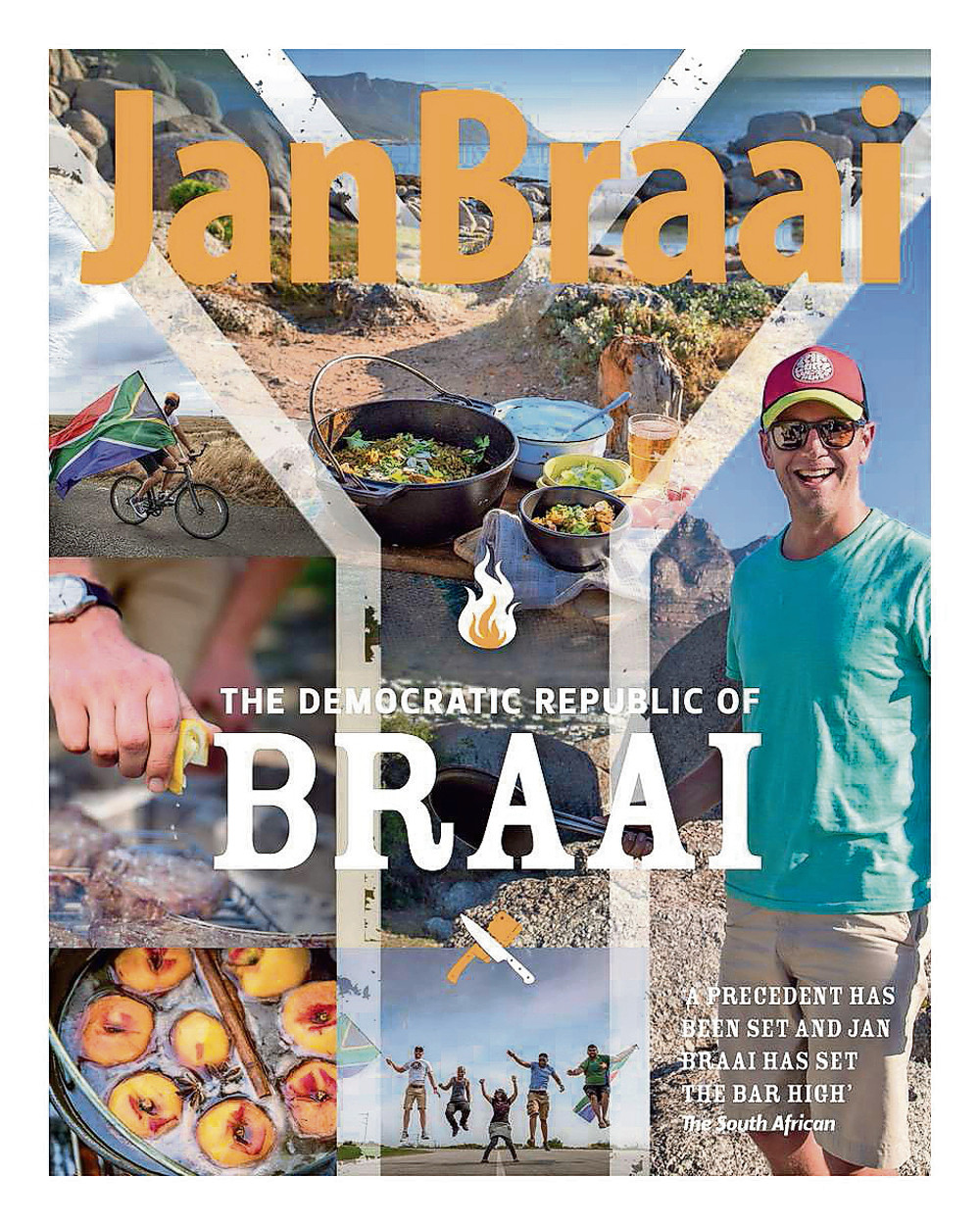Jean Nel's "Braai the Beloved Country".
It’s probably the weather, but braaing in South Africa can really only be described as a cult. The recently published The Democratic Republic of Braai (Bookstore) by Jan Braai and Braai the Beloved Country (Jacana) by Jean Nel, from 2013, will extend your repertoire.
Nel’s is the more traditional of the two – there are recipes for kebabs, a peri-peri chicken “flatty”, a simple lamb chop and a rare rump with salt and lemon.
He also has an excellent recipe for Moroccan lamb, spread with chopped mint, ground cumin and coriander, garlic, lemon and cinnamon, among other things. When it’s done, slice the lamb into pitas and Nel suggests you serve it with tzatziki and a couscous salad. It would go well with home-made hummus and a spicy carrot salad.
Jan Braai, or Jan Scannell, is also behind the “national braai day” on Heritage Day. His website braai.com is worth taking a look at. Here is a man who will braai anything – there’s a recipe for braaied cheesecake and another for carrot cake, both of which are cooked in a potjie.
For Scannell, a food thermometer will “transform the way you braai and how good you are”. He believes beef to be ready at 57?C, lamb is done at 63?C and pork will be perfect at 73?C. The point of using a thermometer is to avoid overcooking and drying out the meat.
He also has commonsense suggestions, such as when to light the fire – it takes about 45 minutes for the wood to turn into coals, so count backwards from the time you want to eat.
He believes briquettes should be used only in “extreme emergencies” and does not like their look or smell. He prefers wood or, failing that, charcoal, but warns not to put the meat on until the charcoal is burnt through and no black pieces remain.
He says you should buy your wood by the bakkie-load and then store it “anywhere outside”. Then, “over time, recently cut wood becomes less recently cut and then is fun to braai with”.
Scannell will have you preparing meals you are more used to making on your stove. There’s fillet steak with mushroom risotto, the latter prepared in a potjie. He is also good on curries, and you’ll find recipes for curried pork neck, a lamb korma and massaman beef.

And what about those who don’t eat meat and are tired of the usual burnt – and often undercooked – butternut wrapped in foil?
Braaied haloumi is excellent – brown and crispy on the outside and soft and slightly squeaky inside. Don’t cut it up; just put the whole piece on the grid. It’s a good idea to have a sauce for when it’s done – five or six tablespoons of lemon juice, the same of olive oil, chopped coriander or mint, and a few green chillies.
Denis Cotter, the chef at Café Paradiso in Cork, Ireland, suggests serving braaied vegetables before you even start cooking the meat. You will need a dressing to drizzle over them when they’re done: a cup of olive oil, preserved lemon and juice, salt and pepper and a herb such as rosemary or thyme.
Vegetables that are good to braai include courgettes, asparagus or young leeks. So are sweetcorn, baby potatoes and chunks of butternut – just give them a brief boil before putting them on the grid.
I asked a friend, a braai expert, what her tips were for a successful braai. She suggested listening to the meat as it cooks – this will tell you whether the meat is cooking too fast, or not at all.
That and, if you’re doing chops, “the fire must be really hot”.